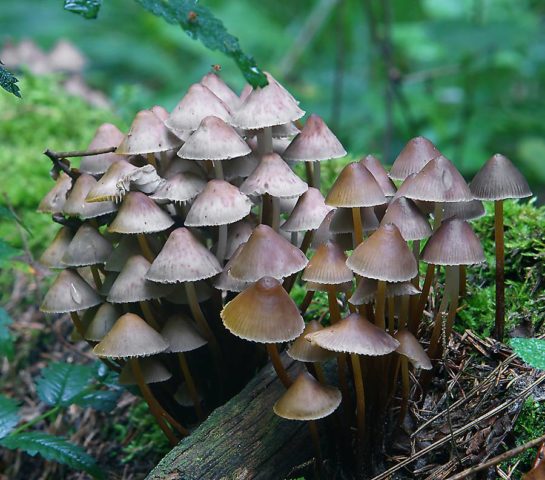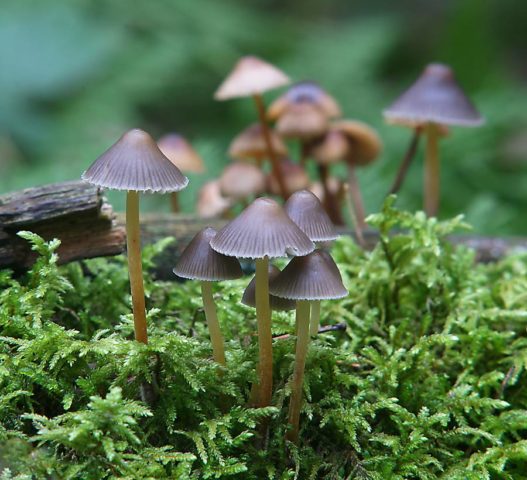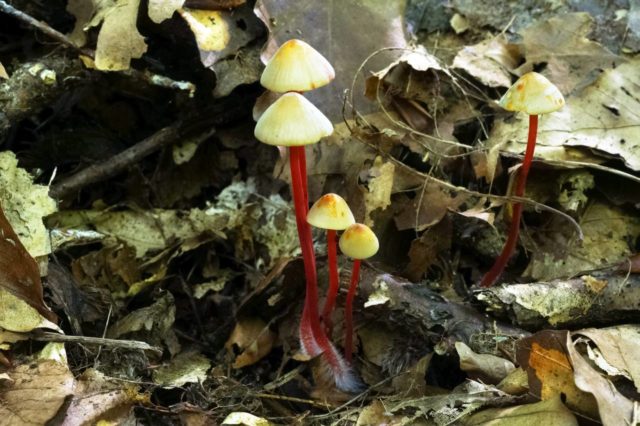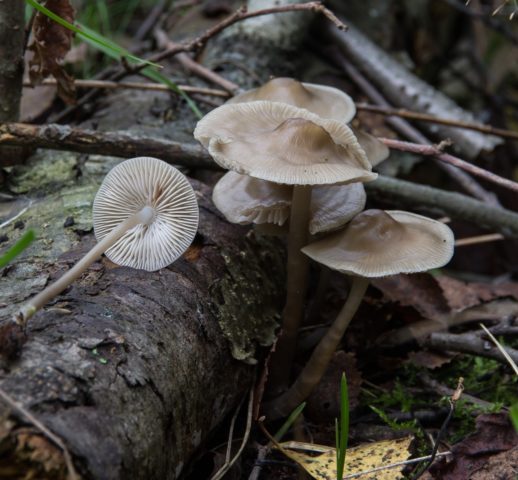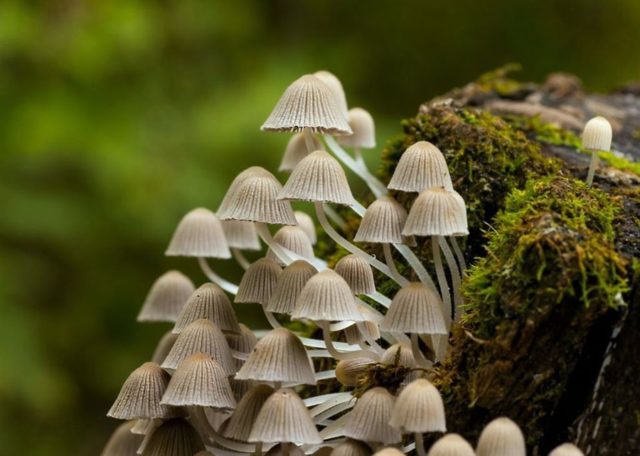Content
Often in the forest, on old stumps or rotten trees, you can find groups of small thin-legged mushrooms - this is the tilted mycena. Few know what this species is and whether its representatives can be collected and used for food. Its description will help to understand this.
What mycenae look like
The inclined mycena (Mycena inclinata, another name is variegated) belongs to the Mitsenov family, the Mitsen genus. The mushroom is known thanks to the description of the Swedish scientist E. Fries, published in the 30s. XIX century. Then the species was mistakenly attributed to the Shapminion family, and only in 1872 its belonging was correctly determined.
The hat of young specimens looks like an egg, which, as it grows, becomes bell-shaped, with a slight elevation in the center. Further, the surface of the mushroom becomes slightly convex. The outer edges of the cap are uneven, serrated. The color can be of several options - grayish, muted yellow or light brown. In this case, the intensity of the color weakens from the center to the edges. The size of the cap is small and averages 3 - 5 cm.
The lower part of the fruiting body is very thin (size does not exceed 2 - 3 mm), but strong. The length of the stem can reach 8 - 12 cm. At the base, the color of the fruiting body is reddish-orange. The upper part changes from white to brown with age. Near the ground, several fruiting bodies are often fused with each other.
You can get a closer look at the mushroom from the video review:
The flesh of the mushroom is white, very fragile. It is distinguished by a sharp rancid taste and a subtle unpleasant odor.
Plates are not located too often. They grow to the peduncle and are characterized by a creamy pinkish or grayish color. Spore powder - beige or white.
The tilted variety of mycene can be confused with others - spotted and cap-shaped:
- Unlike the tilted one, the spotted one has a pleasant mushroom aroma. There are also differences in appearance - the edges of the cap in the spotted variety are even, without teeth, and the lower part is completely colored red-brown.
- The bell-shaped variety is more difficult to distinguish from the inclined one. Here you need to focus on the color of the leg - in the first one it is brownish from below, and white from above.
Where mycenes grow tilted
The inclined mycena belongs to decompose fungi, that is, it has the property of destroying the dead remains of living organisms. Therefore, its usual habitat is old stumps, fallen deciduous trees (mainly oaks, birches or chestnuts). It is almost impossible to meet a lonely growing mycene - this mushroom grows in large heaps or even whole colonies, in which young and old mushrooms, differing in appearance, can coexist.
The distribution area of mycenae variegated is quite wide: it can be found both in many countries of the European continent, and in Asia, North America, in northern Africa and Australia.
The harvest period falls in the second half of summer and lasts until the end of autumn. The bent mycena bears fruit every year.
You can get a closer look at the mushroom from the video review:
Is it possible to eat inclined mycenae
The tilted mycena does not contain any poisonous substances. Despite this, it is classified as an inedible mushroom, the use of which is prohibited. This is due to the rancid taste of the pulp and an unpleasant, pungent odor.
Conclusion
Leaning mycena is a common forest mushroom that does an important job of clearing the forest by destroying dead tree parts. Despite the absence of toxins in the composition, the mushroom is inedible and unsuitable for food.
